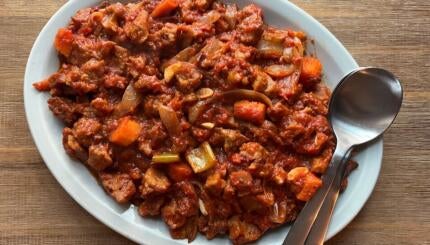Black Bean Hummus
A new twists on a Middle Eastern staple.
While chickpeas–with their tiny stature and unassuming flavor–maintain a humble persona, their significance throughout history commands serious respect. One of the earliest plants to be domesticated for human use, chickpeas were first planted along with wheat, barley, lentils, and other ancient grains and legumes in the Fertile Crescent some 10-12,000 years ago. Fittingly, chickpeas have long been a staple of Middle Eastern cuisine, found in everything from stews and savory pies to fritters to spreads
Vegetarians and health food enthusiasts like Mollie Katzen first helped to introduce the protein-packed spread to the American palate in the 1960s and 1970s. Today it is nearly ubiquitous: Sabra is becoming a household-recognized brand, hummus and pita platters show up next to mozzarella sticks and nachos on diner menus, and the dip has become a familiar-enough cultural reference to carry scenes in major motion pictures (i.e. the infamous “hummus scene” in Don't Mess with the Zohan).
The New York Times published an article discussing hummus' growing popularity in the United States, especially flavored versions that add savory mix-ins like sun-dried tomatoes, roasted red peppers, and avocado. MyJewishLearning.com's blog Mixed Multitudes mentioned a New Hampshire-based company that launched a line of dessert hummus that includes flavors like caramel apple, chocolate mousse, and pumpkin pie. The three recipes below do not take hummus innovation to such extremes, but do offer some unexpected twists on the classic.
Of course, purists can make their own traditional hummus by following this recipe.
This black bean based-riff on traditional chickpea hummus is packed with serious flavor thanks to the fresh cilantro and ground spices.
You might also like these variations:
Roasted Garlic Hummus
Lima Bean Hummus with Toasted Peanuts
Ingredients
1/4 teaspoon ground cumin
1/4 cup cilantro leaves, chopped
1/2 teaspoon salt
2 cloves garlic
1 15-oz can black beans, rinsed and drained
1/4 cup olive oil
1-2 Tablespoons tahini
1/4 teaspoon ground cayenne
Directions
Put all ingredients into a blender or food processor and blend/process until smooth, stopping to scrape down the sides as needed. Store in an airtight container in the fridge.


